This article is intended for informational purposes on high volume low-calorie foods only. This article is not intended to diagnose or replace evaluation by a medical professional. I am not a registered dietician. Please consult a nutritionist or registered dietician if you are looking to make any changes to your current diet, lifestyle, or treatment plan.
Maintaining a healthy diet and controlling your weight can be really difficult these days. With access to junk food, the increased sitting most of us have to do during our day jobs, and the constant “busyness”, of our lives, it can be hard to find time to be healthy. That’s why it’s important to understand the concept of high volume low-calorie foods. Incorporating these foods into your weekly meal plan will allow you to control your calorie intake, lose weight, and be healthier overall.
Eating high volume low-calorie foods is a simple and easy strategy you can start using today to make a dramatic and long-term effect on your weight and health.
In this article, I’ll go over the best high volume low calorie foods that you can incorporate into your daily meals. With a focus on fruits, vegetables, and lean meat, these foods will help you lose weight, feel more energized, stay full and satisfied longer, and help you avoid calorie counting.
Table of Contents
- What Are High Volume Low-Calorie Foods?
- High Volume Low-Calorie Foods for Weight Loss
- The Science Behind High Volume Low-Calorie Foods
- 25 High Volume Low-Calorie Foods
- High Volume Low-Calorie Foods for Each Season
- High Volume Low-Calorie Foods for Special Occasions
- High Volume Low-Calorie Breakfast Ideas
- Healthy Lunch Ideas
- Healthy Dinner Ideas
- Healthy Snack Ideas
- Healthy Dessert Ideas
- High Volume Low-Calorie Beverage Ideas
- High Volume Low-Calorie Vegan Meals
- High Volume Low-Calorie Vegetarian Meals
- Incorporating High Volume Low-Calorie Foods into Meal Prep
- Bottomline
What Are High Volume Low-Calorie Foods?
High-volume, low-calorie foods are foods that you can eat large amounts of without consuming many calories. Oftentimes, foods like fruits and vegetables have very few calories per serving, making them a good option for volume eating.
Eating high volume low calorie foods is based on calorie density. Calorie density is the concept that different foods have different amounts of calories per square inch.
For example, eating 100 calories of strawberries will look very different than eating 100 calories of chocolate. With 100 calories of strawberries, you could eat 25 medium-sized strawberries. That’s a lot of strawberries! However, you could only eat 3 squares of chocolate in 100 calories.
High volume low-calorie foods have lower calorie density, which allows you to eat more of it for fewer calories.

High Volume Low-Calorie Foods for Weight Loss
An important factor in losing weight is making sure you’re consuming fewer calories than you burn. That’s why eating high-volume, low-calorie foods is a great strategy for your weight loss journey. By eating high-volume, low-calorie foods, you’ll be able to eat more food for fewer calories.
The best part? This will help you stay fuller and satisfied longer while helping you hit your weight goals. It’s an easy way to lose weight without making yourself feel hungry and restricted. It’s a very sustainable weight loss strategy.
The Science Behind High Volume Low-Calorie Foods
The reason why incorporating high-volume foods into your diet is so effective is due to the calorie density of these foods.
Referring to our earlier example of eating 100 calories of chocolate vs. strawberries – why do both foods have such drastic differences in volume?
Every food you eat has a certain weight of proteins, carbs, and fat. These macronutrients are weighed in grams. Every gram has a different amount of calories. One gram of carbs has four calories. If you eat a slice of bread with 20 carbs, you’ll consume 80 calories.
Protein has four calories per gram and fat has a whopping nine calories per gram!
But that’s not the end of the story. It continues.
High-volume low-calorie foods tend to have much more water and fiber (and less fat) content than higher-calorie foods, such as oils, fast food, and fatty meats. Water will fill up your stomach faster, signaling to your body that you’re full. The fiber typically found in high-volume foods will slow down the digestion of these foods in your body. This will leave you feeling fuller for much longer.
Going back to the strawberries and chocolate example – chocolate will have a greater concentration of milk, sugar, and fat. Whereas strawberries will have no fat or milk, and much less sugar per square inch. Strawberries will have more fiber and water content, filling you up faster and keeping you full longer.
Let’s look into the top high-volume, low-calorie foods that will help you stay satisfied and lose weight.
25 High Volume Low-Calorie Foods
1. Berries
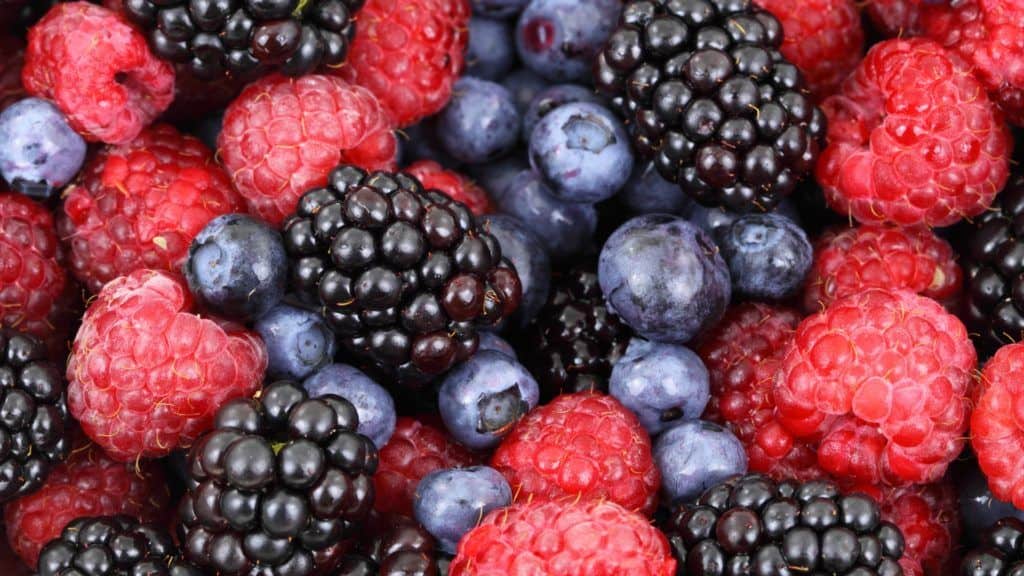
Berries are a great food when you’re trying to lose weight and stay low on your calorie consumption. For every 100 grams, berries will be about 40-60 calories. One cup of berries (about 148 grams) is 85 calories.
Berries are packed with antioxidants, vitamins, and minerals. One 100-gram serving can provide a substantial amount of your daily value for vitamin C, manganese, vitamin K, folate, and copper. They’re high in fiber, can help fight inflammation, and may help lower your cholesterol.
Pour berries over your morning cereal or oatmeal. Blend them into smoothies, make a berry salad, berry parfait, or eat them as a low calorie snack.
Recipes with Berries
- Energizer Berry Smoothie
- Strawberry Lime Smoothie
- Strawberry Salad with Basil and Lemon
- Triple Berry Overnight Oats
2. Dark Leafy Greens
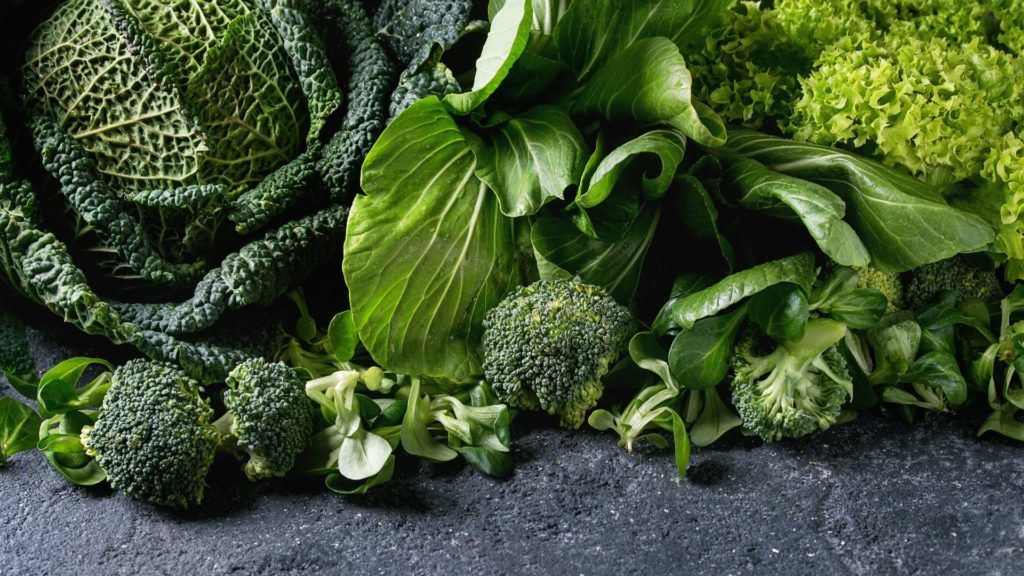
Dark leafy greens such as spinach, kale, arugula, collard greens, Swiss chard, and many more can have 30-40 calories per 100 grams or one-cup serving.
Dark leafy greens are considered a superfood and are packed with antioxidants, vitamins, and minerals. Looking at kale, a one-cup serving (67 grams) has 684% of your daily value of vitamin K! Dark leafy greens are also extremely rich in vitamins A and C.
Pair dark leaf greens in salads, mix into scrambled eggs or sauté with oil and garlic.
Recipes with Dark Leafy Greens
- Best Simple Tossed Green Salad
- Chopped Kale Salad with Red Cabbage and White Cheddar
- Smoky Grilled Pizza with Greens and Tomatoes
3. Grains
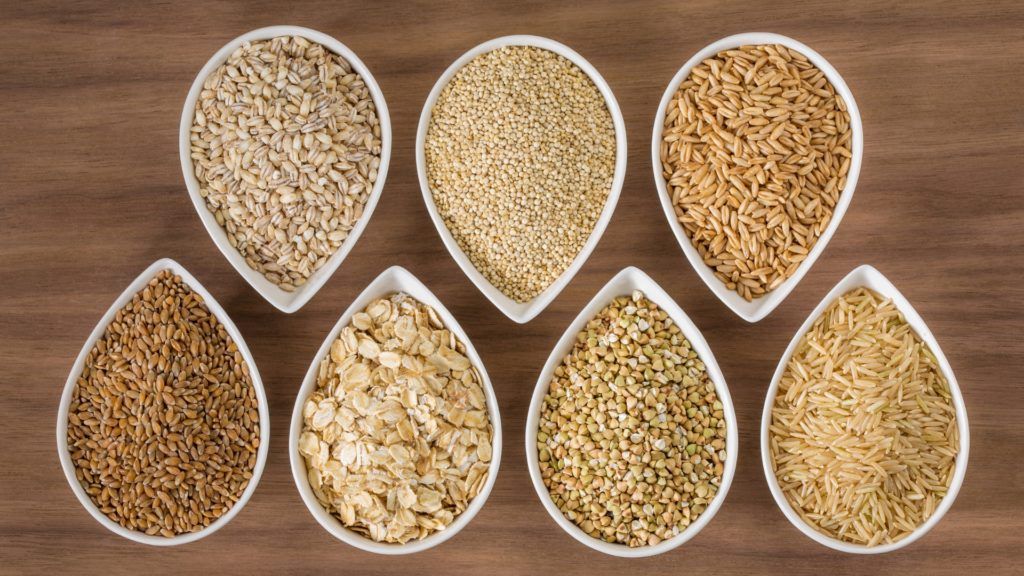
Grains are full of fiber and minerals that will keep you full, satisfied, and energized throughout the day. Oats, quinoa, farro, brown rice, bran, barley, buckwheat, and more are all great high volume low-calorie foods.
Although slightly higher calorie than the other foods in this list (like fruits and vegetables), grains will keep you much fuller for longer. Quinoa has about 200 calories per serving of one cup. Grains can help you control your weight, blood pressure, and cholesterol levels.
Incorporate grains into your breakfasts by making oatmeal with berries, making a quinoa buddha bowl for lunch or farro salad for dinner.
Recipes with Grains
- Healthy Greek Quinoa Salad with a Simple Lemon Vinaigrette
- Chocolate Coconut Cereal Recipe
- Whole-Wheat Spelt Salad with Leeks and Marinated Mushrooms
4. Celery
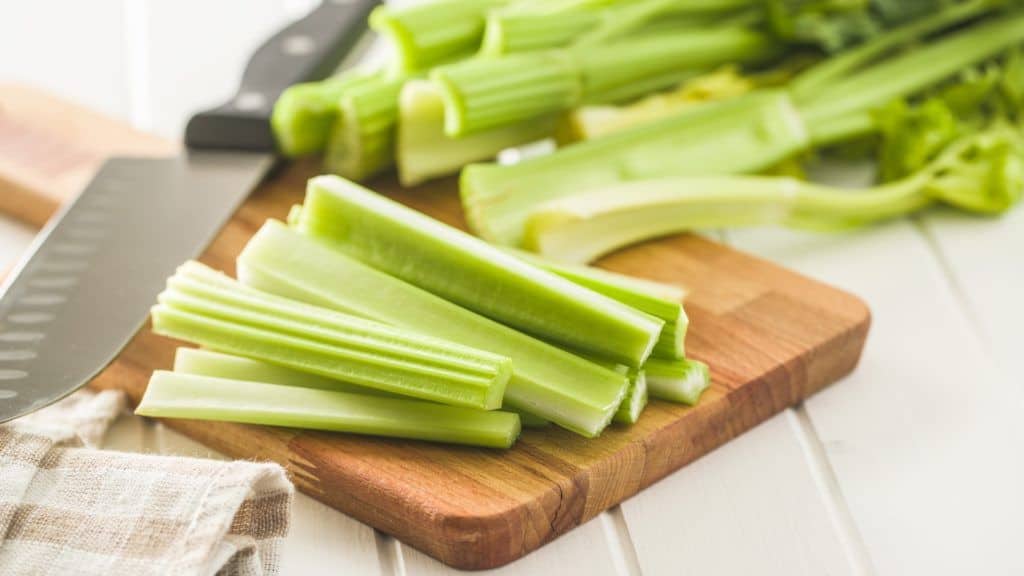
One cup of chopped celery has a whopping 14 calories!
Celery contains many anti-inflammatory, antibacterial, and anti-viral properties. Celery is rich in vitamin K, vitamin C, vitamin A, folate, and potassium. With its high fiber content, celery can help aid in digestion and act as a great prebiotic.
Prepare celery as a quick snack by chopping it into a salad or dipping it in a low-calorie dip, like hummus. Juice it every morning and drink an 8 oz. glass to experience heightened energy levels and decreased inflammation.
Recipes with Celery:
5. Cottage Cheese
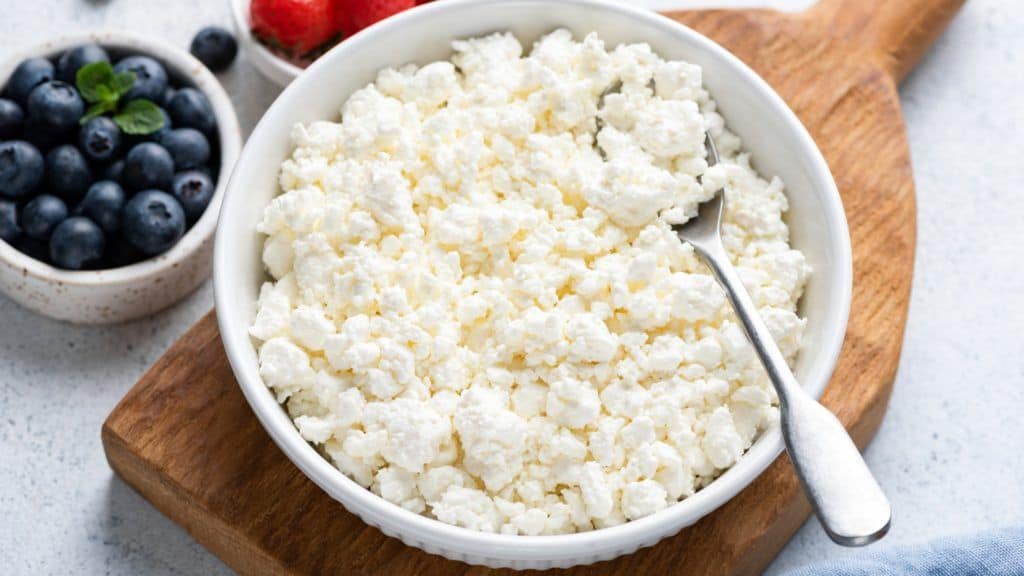
One cup of non-fat cottage cheese is about 105 calories. Cottage cheese is a great source of protein. Cottage cheese will keep you much fuller for longer.
Not only is cottage cheese high in protein with 15 grams per cup, but it’s a good source of selenium, phosphorous, and B vitamins. These nutrients help support muscle growth, weight loss, and bone health.
Put cottage cheese in your favorite smoothies, pair it with mixed berries, or mix it into protein pancake batter.
Recipes with Cottage Cheese:
- Scrambled Eggs with Cottage Cheese
- Crustless Quiche with Spinach and Cottage Cheese
- Cottage Cheese Breakfast Bowl
6. Non-Fat Greek Yogurt

A one-cup serving of non-fat Greek yogurt has a whopping 80 calories and roughly 15 grams of protein. This is a great high-protein snack or breakfast option to help you stay under your calorie allotment and lose weight.
Non-fat Greek yogurt is rich in other nutrients such as calcium, vitamin D, and probiotics. This will help your bone, immune, and gut health.
Make a yogurt bowl topped with warmed mixed berries and granola. Make a creamy yogurt dressing for salads, or blend it into smoothies.
Recipes with Non-Fat Greek Yogurt:
- Greek Yogurt Bowl with Citrus, Cacao, and Mint
- Grilled Salmon with Wasabi-Dill Yogurt Sauce
- Crispy Smashed Potatoes with Parsley Yogurt Sauce
7. Chia Seeds
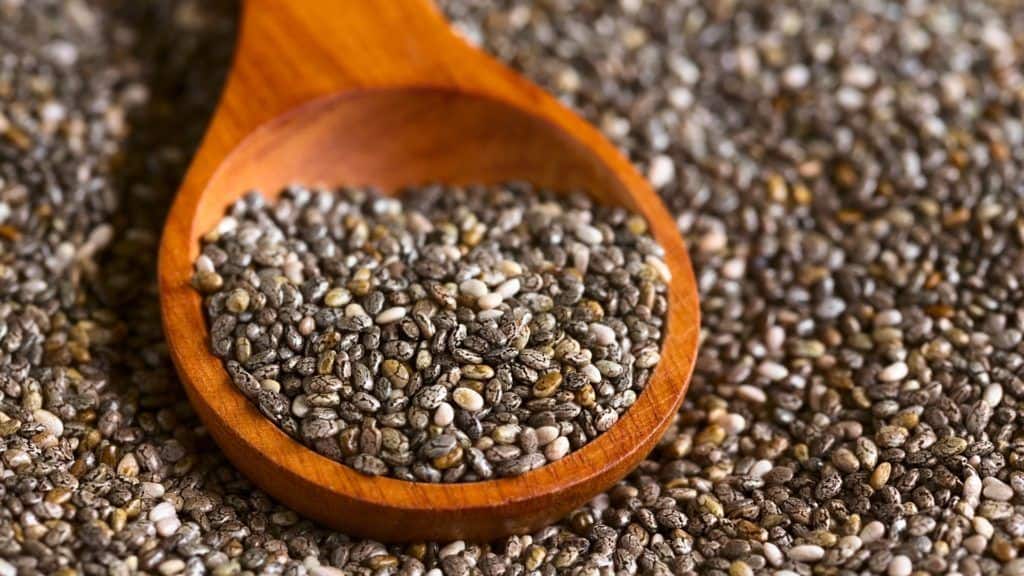
One serving of chia seeds is about 130 calories. That’s 1 tablespoon of raw chia seeds. However, don’t be alarmed. By preparing chia seeds the correct way, you can make this into a low-calorie meal.
Take 1-2 tablespoons of raw chia seeds and stir them into ½ cup of almond milk (or any low-calorie nut milk of your choosing). Let the chia seeds soak in the fridge for 3-5 minutes. Then, stir again, and serve it with your favorite fruit.
When you soak chia seeds, they expand in size and become gel-like. Not only does this make it great for healthy puddings, but it turns this high-calorie food into a low-calorie snack or meal option. The gel-like chia seeds will aid in digestion and keep you full like a bowl of oatmeal.
Recipes with Chia Seeds:
- Overnight Chocolate Chia Seed Pudding
- Raspberry Peach Mango Smoothie Bowl
- Healthy Gut Tonic with Chia Seeds
8. Melon
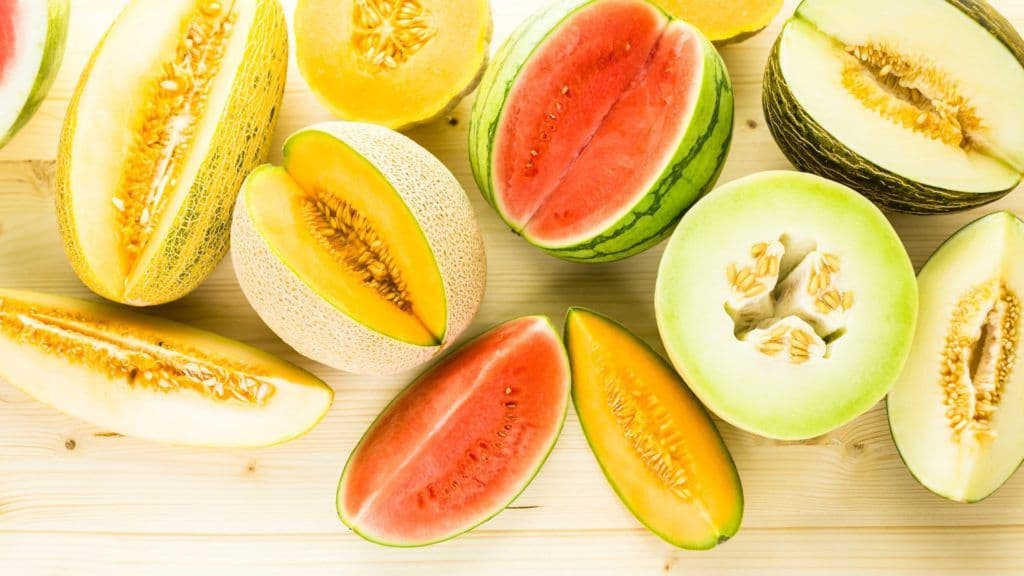
A one-cup serving of melon is 50 calories. Eating cantaloupe, watermelon, honeydew, and other melon types is a great way to get extra fiber in your diet while satisfying your sweet tooth in a healthy way.
Melons are full of antioxidants. For example, in the orange color of cantaloupe, beta-carotene turns into vitamin A in the body when consumed. This helps support vision and eye health, healthy skin, and your immune system.
Watermelon has antioxidants such as lycopene, because of its red color. Lycopene has been known to support bone health and help fight against heart disease and certain types of cancers.
Recipes with Melon:
9. Citrus
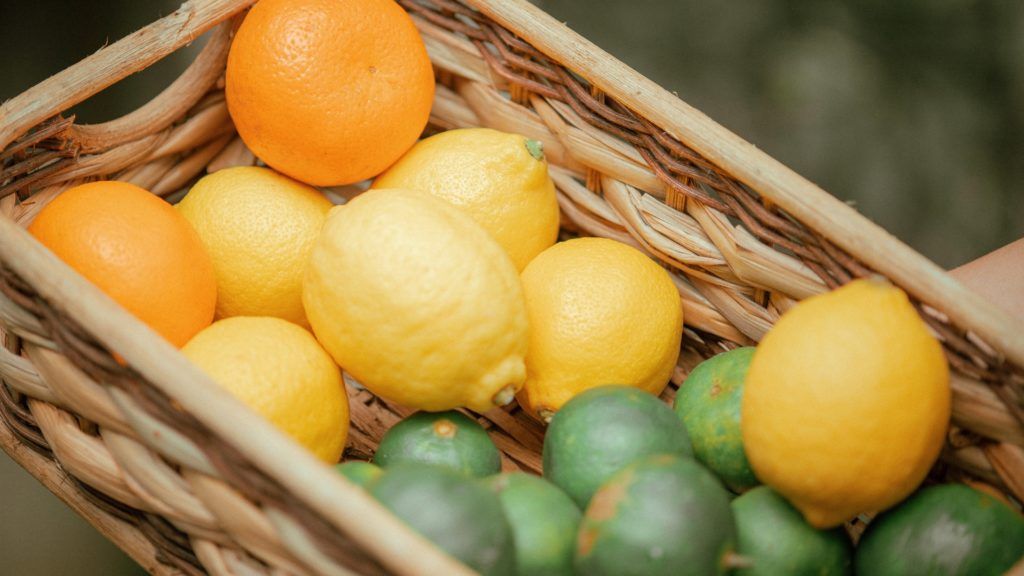
Just one serving of citrus is less than 60 calories. That’s just for the bigger citrus fruits like oranges and grapefruits. Smaller citrus fruits like lemons and limes have far less.
Citrus is full of vitamin C, which helps support our immune system and the health of our skin. Just one serving of citrus will help you meet or exceed your daily needs for vitamin C.
Citrus is loaded with water content and dietary fiber and is known to be one of the lower-calorie, higher-volume foods on the list. They are great to eat whole on a hot summer’s day, squeeze into a cold, refreshing juice, or stir into your favorite salads and soups.
Recipes with Citrus:
- Strawberry Salad with Lemon and Basil
- Greek Quinoa Salad with a Simple Lemon Vinaigrette
- Chicken Salad with Citrus and Chile Oil
10. Egg Whites
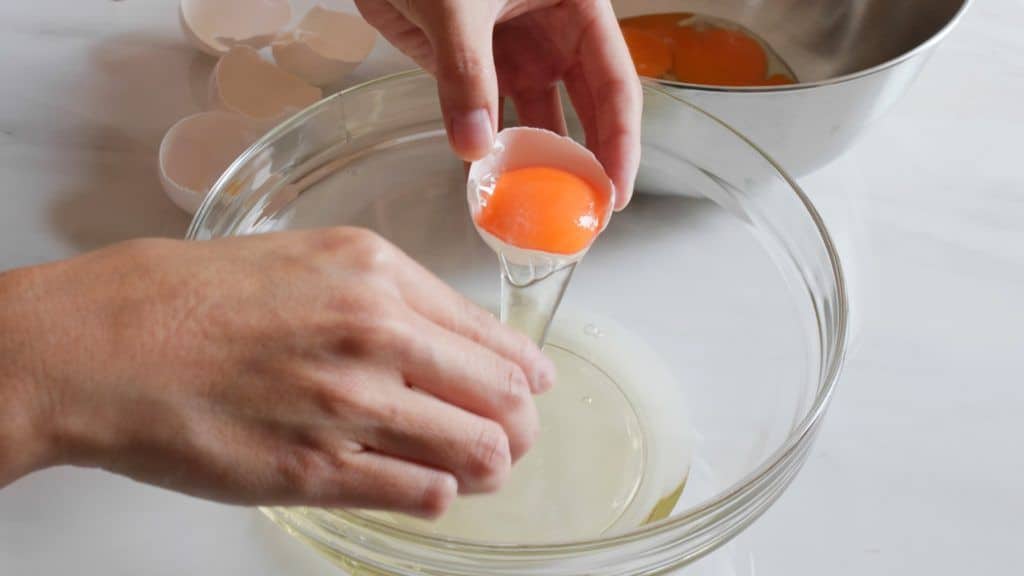
Egg whites are an impressive high-volume low-calorie food. One cup of egg whites is only 125 calories. Plus, in that one cup, there are 26 grams of pure protein! That makes up 83% of the total calories!
Protein will help you stay full longer because it takes longer to digest. Plus, it will aid in muscle growth and maintenance.
Make scrambled egg whites and mix in other high volume low-calorie foods such as dark leafy greens, tomatoes, and mushrooms.
Recipes with Egg Whites:
- Egg White Muffins with Spinach and Tomatoes
- Air Fryer Egg White Frittata
- Fluffy, Souffle-Style Egg White Omelet
11. Lean Meat

Lean meats like chicken breast, pork tenderloin, venison, lean ground beef, and others are great high volume low-calorie foods. A one-cup serving is about 230 calories for chicken breasts.
Although higher in calories than the other high volume low-calorie foods listed, it’s packed with much more protein that will keep you fuller longer. Plus, you won’t need to eat as much.
Grill chicken breasts with a lemon herb marinade and serve with salad. Make a sheet pan dinner with chicken breasts and roasted vegetables. Roast a pork tenderloin and serve with smashed potatoes and roasted carrots. The options are endless.
Recipes with Lean Meat:
- Sheet Pan Chicken with Rainbow Vegetables
- Healthy Grilled Pork Tenderloin
- Mustard-Maple Pork Tenderloin
12. Squash
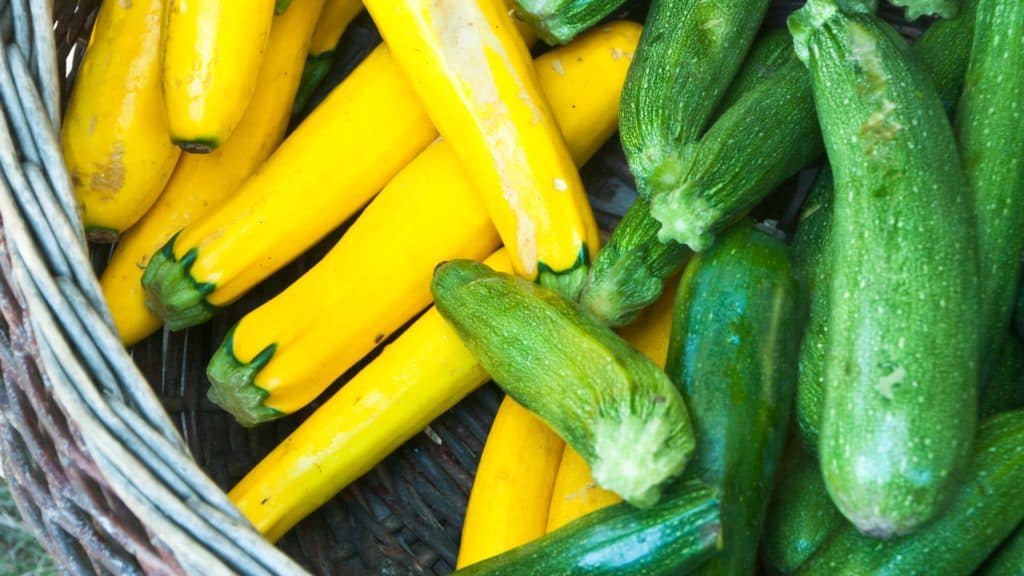
There is an endless variety of squash that can be enjoyed throughout the seasons. High volume and low-calorie, squash is a satisfying and nurturing food. Enjoy acorn squash and baked spaghetti squash in the fall and zucchini in the summer. One cup of zucchini is only 19 calories!
Squash contains a variety of antioxidants that help prevent chronic diseases and certain types of cancers. Squash can also help support bone health, skin health, gut health, eye health, and heart health.
Grill zucchini, yellow squash, and chicken breast and serve with a basil lemon vinaigrette. Roast spaghetti squash and put meatballs and marinara sauce on top for a low-carb, low-calorie dinner. Make zucchini boats stuffed with grains and lean meat. Roast acorn squash with sage and olive oil and blend it into a soup.
Recipes with Squash:
- Simple Skillet Zucchini and Yellow Squash Sauté
- Baked Parmesan Yellow Squash Rounds
- Easy Butternut Squash Soup
13. Mushrooms
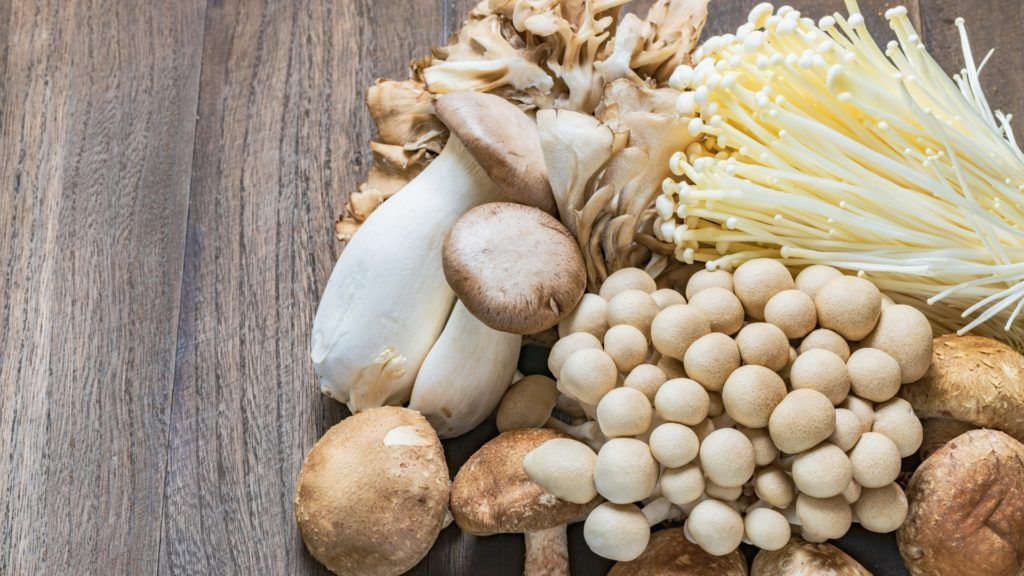
One cup of mushrooms has only 16 calories. The best part? They are a high volume low-calorie food that can make your meals taste really hearty and meaty (without adding the meat).
There are brown cremini mushrooms, white mushrooms, shitake mushrooms, portabella mushrooms, oyster mushrooms, enoki, and more.
Sauté them with olive oil and seasonings, and serve on top of avocado toast. Add them to a stir fry and serve with rice. Air fry them for a healthy snack option, or even take a stab at making mushroom jerky!
Recipes with Mushrooms:
- Chicken Green Bean Mushroom Stir Fry
- Easy Mushroom Tacos
- Smoky Mushroom Skewers with Labneh and Salsa Verde
14. Cauliflower
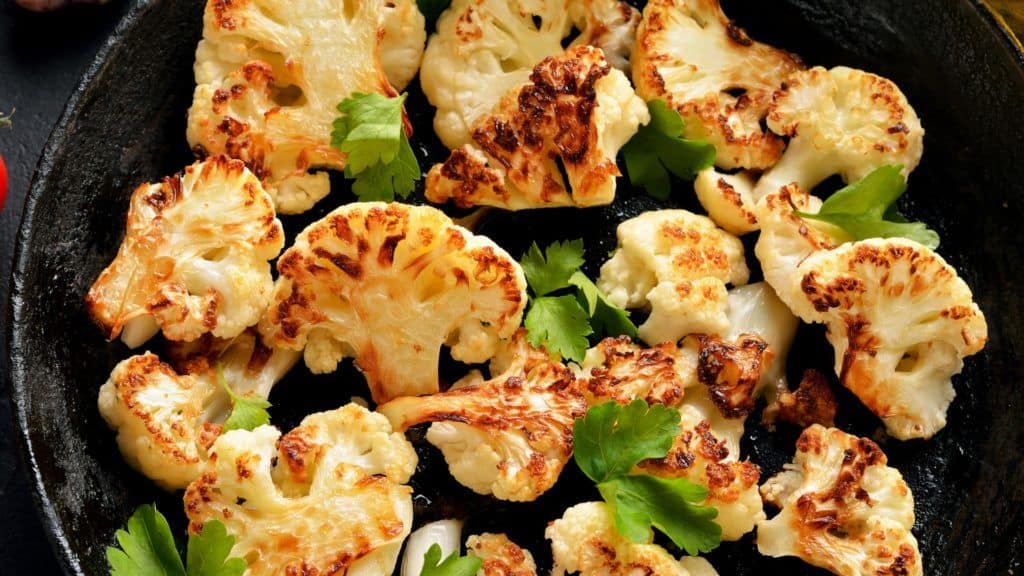
A one-cup serving of cauliflower is 27 calories!
The power of eating cauliflower as a high volume low-calorie food doesn’t come from eating it as a standalone side dish. Although that is a healthy option.
The real power of cauliflower comes from using it as a carb replacement. Replace regular rice with cauliflower rice in your Buddha bowls, burrito bowls, stir fries, and other meals that ask for rice. You’ll significantly reduce your calories while staying full and satisfied.
Recipes with Cauliflower:
- Healthy Air Fryer Cauliflower Bites
- Mexican Cauliflower Rice
- Thai-Inspired Grilled Cauliflower Steaks
15. Soup

Soup is extremely versatile. You can make soup in a variety of ways. Vegetable soup, in particular, is a great high volume low-calorie food. That’s because the fiber from the vegetables and the water content from the broth will make you feel full quickly. Plus, all the fiber will slow down the digestion, making you feel full longer.
One cup of vegetable soup has roughly 100 calories.
Soup Recipes:
16. Beans and Legumes
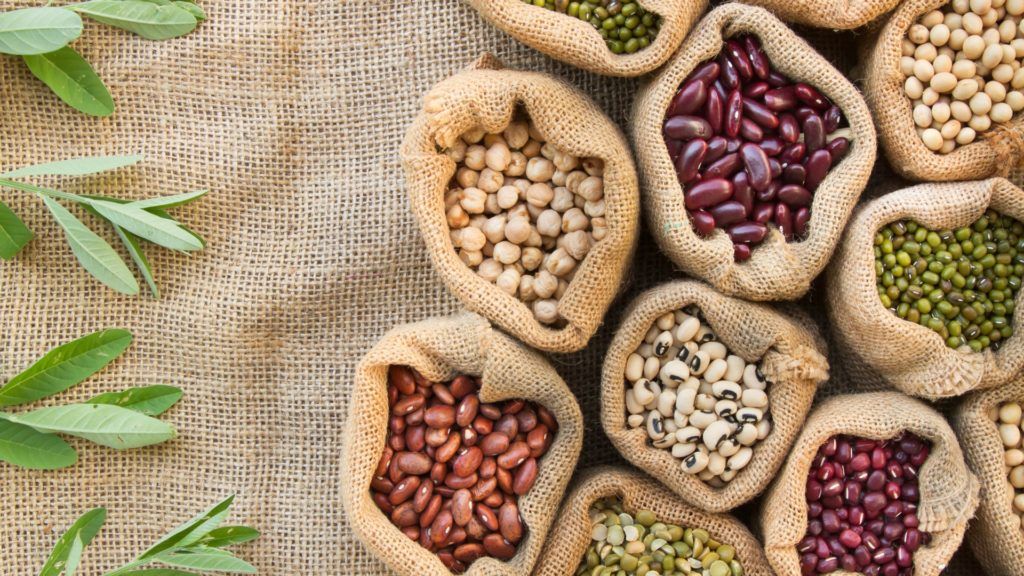
Beans and Legumes are another superfood that you should incorporate into your diet. They are packed with plant-based protein and fiber. One cup of cooked beans has 240 calories, including 15 grams of dietary fiber and 15 grams of protein.
Eating legumes regularly can improve and lower your blood sugar and blood pressure. They are full of antioxidants that help fight against disease and aging.
Add lentils to marinara sauce, and make a vegan Bolognese sauce. Mix lentils with brown rice for a high-fiber, low-calorie side dish. Make black bean soup and serve with cilantro and lime wedges.
Recipes with Beans and Legumes:
- Crock Pot Vegetable Soup with Lentils
- Garden Garbanzo Bean Salad with Creamy Garlic Dressing
- Hearty and Satisfying Lentil Chili
17. Tomatoes
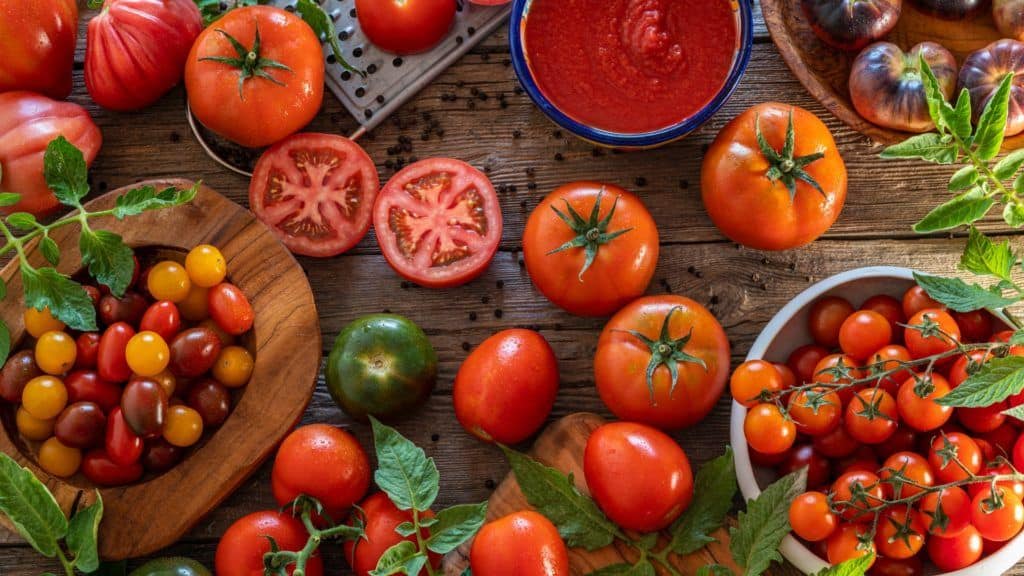
Tomatoes offer a variety of flavor, freshness, and color to any dish you make them with. One medium tomato has 22 calories.
Tomatoes can help support eye, bone, and heart health. The pigments in the tomatoes can help fight age and lifestyle-related diseases.
Chop tomatoes up and put them in a salad. Roast them and blend them into tomato soup. Make fresh homemade marinara sauce with whole tomatoes or mix them into scrambled eggs.
Recipes with Tomatoes:
18. Cabbage
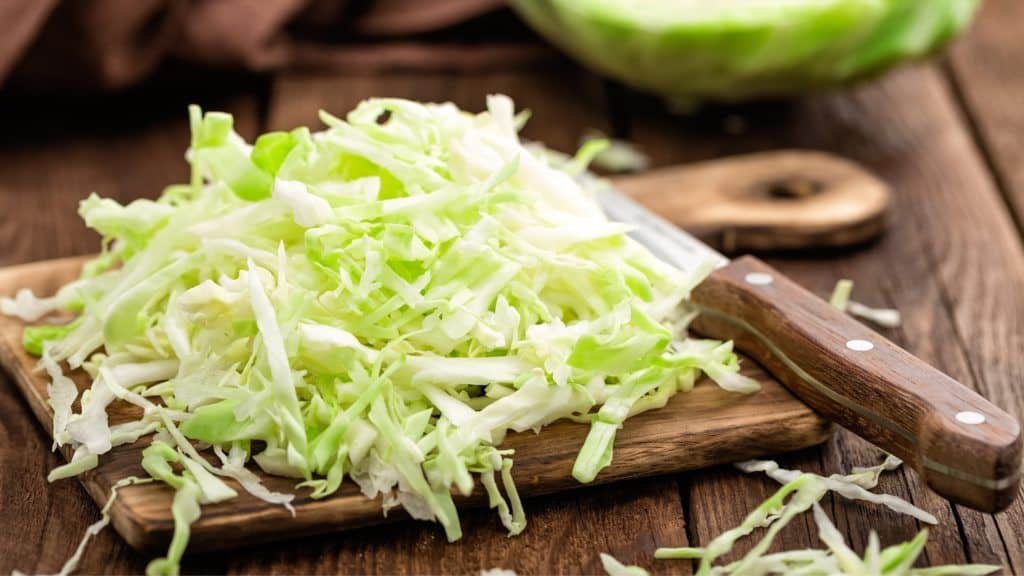
Cabbage is extremely versatile and cheap. It can be used in so many kinds of dishes. One cup of cabbage is 17 calories!
Cabbage is a rich source of vitamin K, vitamin C, folate, manganese, and many others. It may help fight inflammation, improve digestion, keep your heart healthy, and much more.
Add chopped cabbage to a variety of stir-fries. Shred it, and add it to salads or soups.
Have a big harvest of cabbage in your garden? Pickle it or turn it into Sauerkraut for the winter.
Recipes with Cabbage:
19. Seafood
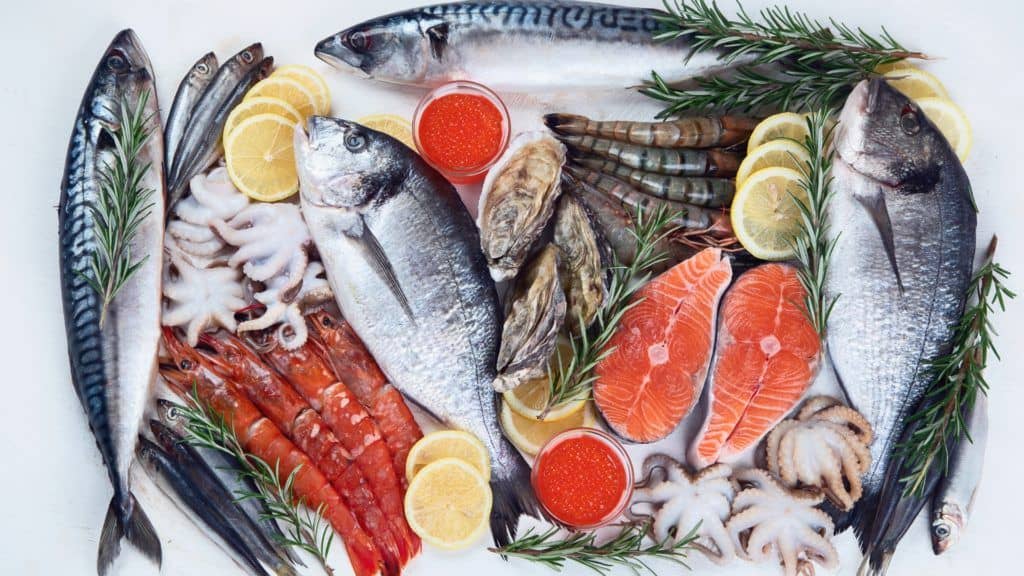
Seafood is a superfood. A variety of seafood is extremely high volume and low-calorie. Shellfish including shrimp, prawns, crab, lobster, clams, oysters, muscles, and scallops are all high-protein, low-fat food options.
Three ounces of shrimp is only 84 calories! That’s about 10-12 medium-sized shrimp.
Grill seafood and vegetables and serve with rustic bread. Make a shrimp and vegetable stir fry. Squeeze some lemon juice over muscles and eat by themselves. Make a delicious cioppino. The options are endless.
Recipes with Seafood:
20. Tofu

Tofu is made by coagulating soy milk and pressing it into blocks of different firmness levels. It’s popularly used in many Asian cuisines. Tofu is a great source of plant-based protein and only has 94 calories per ½ cup.
Tofu is rich in vitamins and minerals, such as calcium, manganese, iron, and vitamin A. Tofu can aid in your brain, bone, and skin health. Plus, it can help you lower your risk for certain diseases and cancers.
Chop tofu up and put it into soup. Stir fry firm tofu with vegetables and stir-fry sauce. Blend silken tofu into smoothies and healthy puddings. If you're new to cooking tofu and don’t know where to begin, check out my beginner’s guide on cooking tofu.
Recipes with Tofu:
21. Potatoes
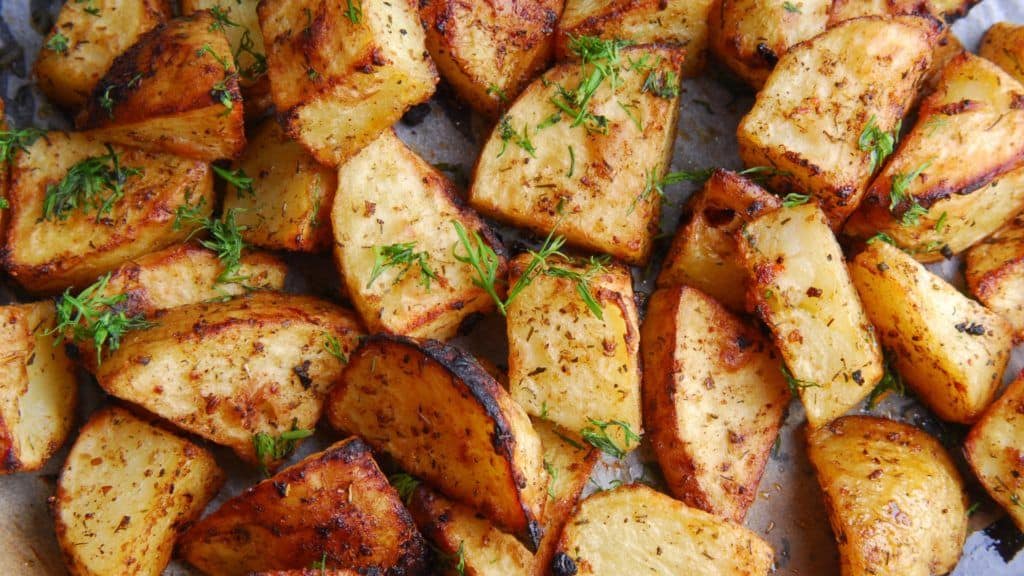
There’s a misconception that potatoes aren’t healthy. That is farthest from the truth!
Although they are more starchy and high-calorie than non-starchy vegetables like tomatoes and zucchini, they are still extremely healthy and low-calorie in general. They are fat-free, gluten-free, plant-based, and extremely affordable. They have nothing but healthy carbohydrates in them.
Their health will largely depend on how you prepare them. Avoid deep frying them in oil or adding lots of fat and sugar to them.
Recipes with Potatoes:
22. Carrots
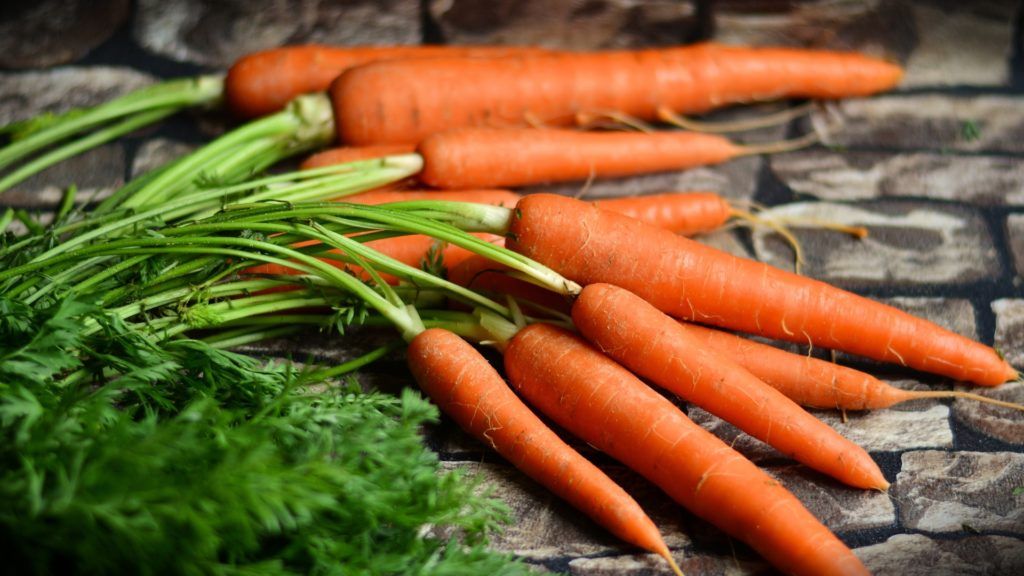
One cup of sliced carrots is only 50 calories. Carrots are rich in antioxidants and vitamin A. They are helpful in supporting eye health, balancing your blood sugar, and helping you manage a healthy weight.
Shred carrots and put them in salads and slaws. Chop them and throw them into chicken and noodle stir-fries. Add as a base to soup. Roast or grill and serve them with a maple glaze or tahini dressing.
Recipes with Carrots:
23. Broccoli
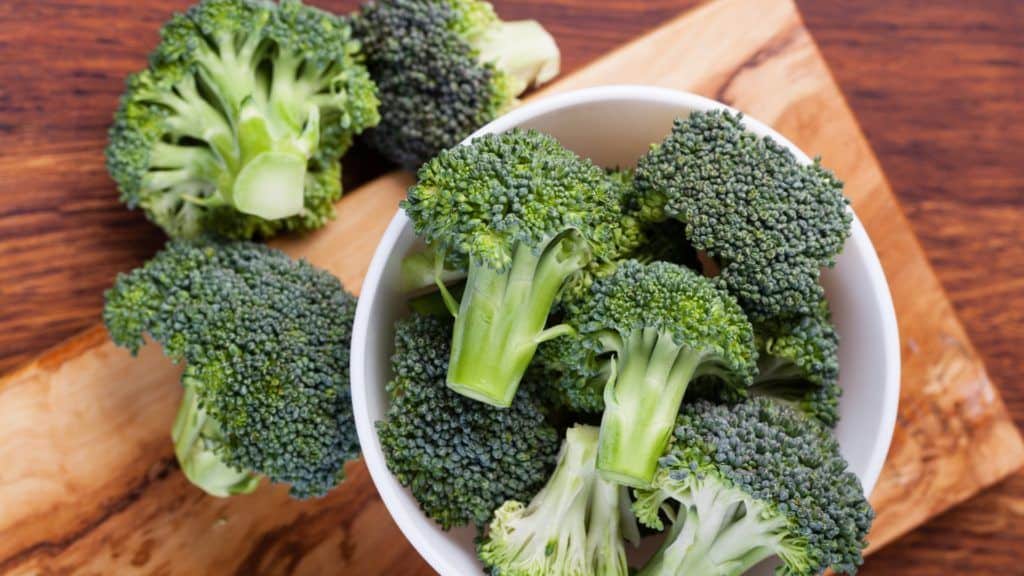
One cup of chopped broccoli only has 31 calories! This dark green is rich in calcium, iron, potassium, phosphorous, zinc, and many more vitamins and minerals. Broccoli can help reduce your risk for cancer, improve bone health, boost your immune health, and help keep your skin healthy.
Throw broccoli into stir fries and soups. Roast in batches to snack on throughout the week. Shred it for salads and slaws.
Recipes with Broccoli:
24. Bell Peppers
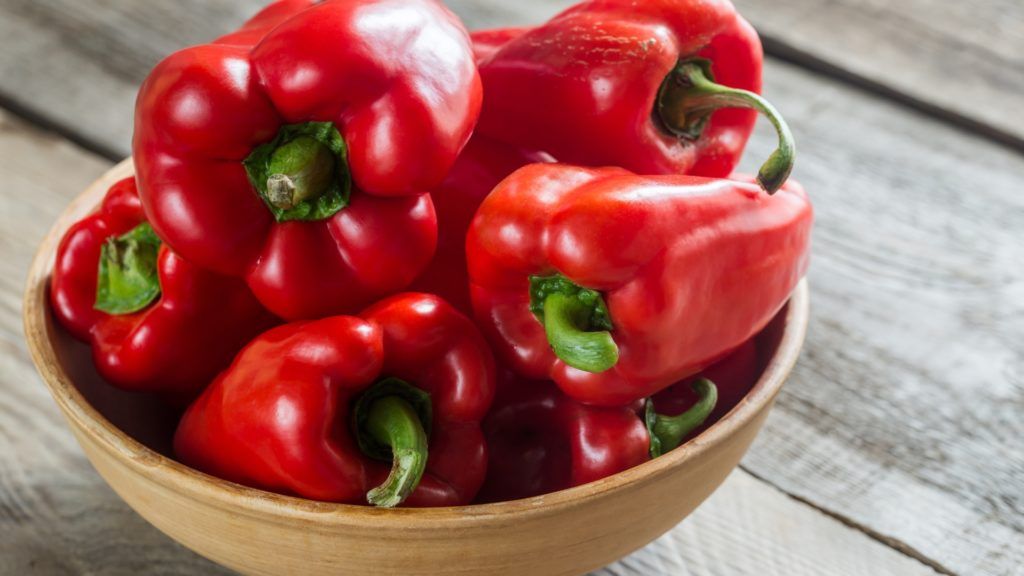
One whole bell pepper is only 37 calories! Bell peppers are full of vitamins, minerals, dietary fiber, and water. Bell peppers are so low calorie because they are 92% water!
They are packed with vitamin C, B vitamins, vitamin K, folate, potassium, vitamin E and A.
Sauté bell peppers with sliced chicken breasts to make chicken fajitas. Put sliced peppers on a sheet pan with other vegetables and lean meat for a sheet pan dinner. Mix into salads and stir-fries or incorporate them into a casserole.
Recipes with Bell Peppers:
25. Grapes
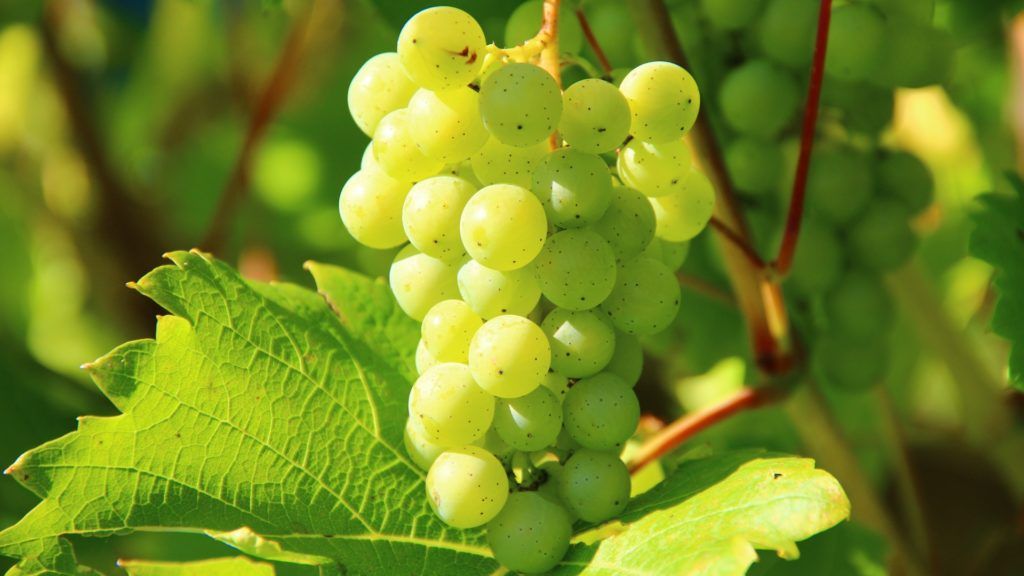
Popular in making wine, grapes can have many more purposes – that are much healthier too. One cup of grapes is only 62 calories. Perfect as a snack or paired with breakfast, grapes are extremely healthy.
They provide over 20% of your daily value in copper. They are also rich in vitamin K, B vitamins, potassium, vitamin C, and Manganese.
Grape Recipes:
High Volume Low-Calorie Foods for Each Season
Nowadays, you can buy most produce all year round. However, it’s best to track what fruits and vegetables are in season, because they will be much cheaper to buy.
Autumn
Reference this list of autumn produce so you can shop in season and eat high volume low-calorie foods for cheaper.
| Apples | Ginger | Pears |
| Bananas | Grapes | Squash |
| Beets | Green Beans | Turnips |
| Bell Peppers | Herbs | Swiss Chard |
| Broccoli | Kale | Sweet Potatoes |
| Brussels Sprouts | Kiwifruit | Spinach |
| Cabbage | Lemons | Rutabagas |
| Carrots | Lettuce | Figs |
| Cauliflower | Limes | Radishes |
| Celery | Mangoes | Pumpkin |
| Collard Greens | Mushrooms | Potatoes |
| Cranberries | Parsnips | Pomegranates |
| Garlic | Onions | Peas |
Winter
There is a smaller selection of high volume low-calorie produce in the winter, but still plenty to pick from. The winter season is known for bringing an abundance of citrus fruits and root vegetables.
| Avocados | Herbs | Winter Squash |
| Bananas | Kale | Rutabagas |
| Beets | Leeks | Swiss Chard |
| Brussel Sprouts | Lemons | Turnips |
| Cabbage | Limes | Broccoli |
| Carrots | Onions | Persimmons |
| Celery | Oranges | Tangerines |
| Collard Greens | Parnsips | Chicory Greens |
| Grapefruit | Potatoes | Cauliflower |
Spring
In Springtime, lettuces, asparagus, certain root vegetables, and rhubarb are in season. Some of the summer fruits also start to show up in grocery stores, like strawberries. Reference the list below for spring high volume low-calorie foods.
| Apricots | Garlic | Peas |
| Asparagus | Herbs | Pineapples |
| Avocados | Kale | Radishes |
| Bananas | Kiwifruit | Rhubarb |
| Broccoli | Lemons | Spinach |
| Cabbage | Lettuce | Strawberries |
| Carrots | Limes | Swiss Chard |
| Celery | Mushrooms | Turnips |
| Collard Greens | Onions | Apples |
Summer
In summer, berries, cherries, cucumbers, peaches, summer squash (like zucchini), and melons are all in season. When cooking high volume low-calorie meals, pull from the following list of foods.
| Apples | Cherries | Limes |
| Apricots | Corn | Mangos |
| Avocados | Cucumbers | Okra |
| Bananas | Eggplant | Peaches |
| Beets | Garlic | Pears |
| Bell Peppers | Green Beans | Pineapples |
| Blackberries | Herbs | Plums |
| Cantaloupe | Honeydew Melon | Raspberries |
| Carrots | Lemons | Strawberries |
| Celery | Lima Beans | Summer Squash |
| Tomatillos | Tomatoes | Watermelon |
High Volume Low-Calorie Foods for Special Occasions
Low calorie meals are oftentimes the last thing on your mind when the holidays roll around. However, by controlling your calorie intake and being mindful of what foods are high volume, you can still enjoy special occasions without it ruining your health goals.
Stay on track and eat high volume low calorie meals by first knowing what’s foods fall into this category, and eating more of these foods when you’re at parties and gatherings. If you’re going to a potluck, bring your own high volume low calorie meal.
It’s important to note that it’s completely up to you whether or not you want to stick to your diet plan during special occasions. It’s okay to give yourself a break if it means it will improve your mental health and help you to enjoy the occasion. You can always resume healthy eating the next day.
High Volume Low-Calorie Breakfast Ideas
Adding high volume low-calorie foods to your breakfasts can give you more energy throughout the day. Load your breakfast heavy with fresh fruits and vegetables, so you can start your day with a lot of energy. Add in fiber or protein so you can stay full until lunchtime.
In the morning, it’s important to start your day with fiber, protein, or both. You can make yourself a bowl of oatmeal topped with berries or a berry protein shake. You can also serve yourself a bowl of non-fat Greek yogurt topped with berries and chia seeds.
If you are staying home for breakfast, whip up some scrambled egg whites and toss in some mushrooms, tomatoes, and spinach. Season it with salt, pepper, red pepper flakes, onion powder, and garlic powder.
Here are some breakfast recipes to try:
- Banana Oatmeal Pancakes
- Peanut Paradise Tropical Smoothie
- Tofu Scramble
- Overnight Oats (Various Flavors)
- Chia Seed Pudding (Various Flavors)
Healthy Lunch Ideas
Your lunch should make you feel more energized after you eat them. You should chose a high volume low-calorie meal that will fight your mid-day slump. Salads and soups are really good options for this.
You can also meal prep stir-fries, roasted vegetables, and fruit salads in your lunch every time you have a hankering to eat.
If you’re making a high volume low-calorie salad, make sure it’s one you know you will stay full from. You don’t want to leave lunch feeling hungry and dissatisfied. That could tempt you to eat unhealthy food later.
If you’re making a salad, mix a variety of dark leafy greens together, such as spinach, spring mix, and arugula. This will add more flavor and make your salad more satisfying. Add protein such as lean chicken breast or tofu. Add dried or fresh herbs for extra flavor. Add your favorite chopped vegetables and ½ cup of your favorite grain (I like quinoa). Drizzle with homemade salad dressing. If you’re eating at home, I like adding a fried egg on top of my salad and poking the yoke to let it run over the salad like a salad dressing.
Here are some lunch recipes to try:
- Beet Salad with Grapes and Walnuts
- Sheet Pan Curried Chicken and Tahini Dressing
- Teriyaki Turkey Rice Bowl
- Cauliflower Fried Rice
Healthy Dinner Ideas
I don’t know about you, but I have to have a hearty and warm meal at dinnertime especially if I’ve been eating cold salad and yogurt bowls all day.
My go-to dinner ideas for high volume low-calorie meals are stir fries, soups, stews, and roasts.
Stir fries usually consist of one type of meat, 2-3 types of vegetables, sautéed quickly with a savory sauce. Depending on your preferences, many people make stir fries with a 1:1 ratio of meat to vegetables.
If you want to lose weight and eat more high volume foods, you should have more vegetables than meat in your stir fry in order to bulk it up. Try using a 1:2 or 1:3 ratio of meat to vegetables. That means you’re adding 2-3x more vegetables than meat. If you add one cup of meat, then add 2-3 cups of vegetables. Vegetables like bell peppers, mushrooms, snap peas, and broccoli are great for stir fries.
Here are some dinner recipes to try:
- Loaded Vegetable Soup
- Chicken Green Bean Mushroom Chicken Stir Fry
- Sumac Spiced Mediterranean Chicken Meatballs
- Stuffed Butternut Squash with Italian Sausage
- Low-Carb Zucchini Boats
Healthy Snack Ideas
It’s important to have low calorie snacks prepared, so you don’t have to think twice when you get hungry in between meals. A little planning can pay dividends when you’re trying to lose weight and be healthy.
Meal prep snacks ahead of time and store them in the fridge for the week ahead. Cut up a bunch of fruit, so you can just grab it and eat it. Roast a bunch of vegetables so you have this available instead of chips. You can prepare healthy versions of your favorite snacks so you can feel like you’re indulging while staying healthy.

Here are some snack recipes to try:
- Healthy Sour Candy Frozen Grapes
- Healthy Oven-Baked Potato Chips
- Kale Chips
- Nut-Free Apricot Bliss Balls
Healthy Dessert Ideas
When you’re making high volume low-calorie desserts, defer to fruit, yogurt, ancient grain flours, eggs, and a small amount of chocolate. These ingredients will help you keep your desserts low calorie, but extremely satisfying.
Dip berries or sliced bananas in chocolate, and then freeze them to make fruity dibs. Make healthy protein cookies with eggs and protein powder. Whip up fruity popsicles by blending your favorite fruit with ice and freezing them in popsicle molds. Make banana nice cream.
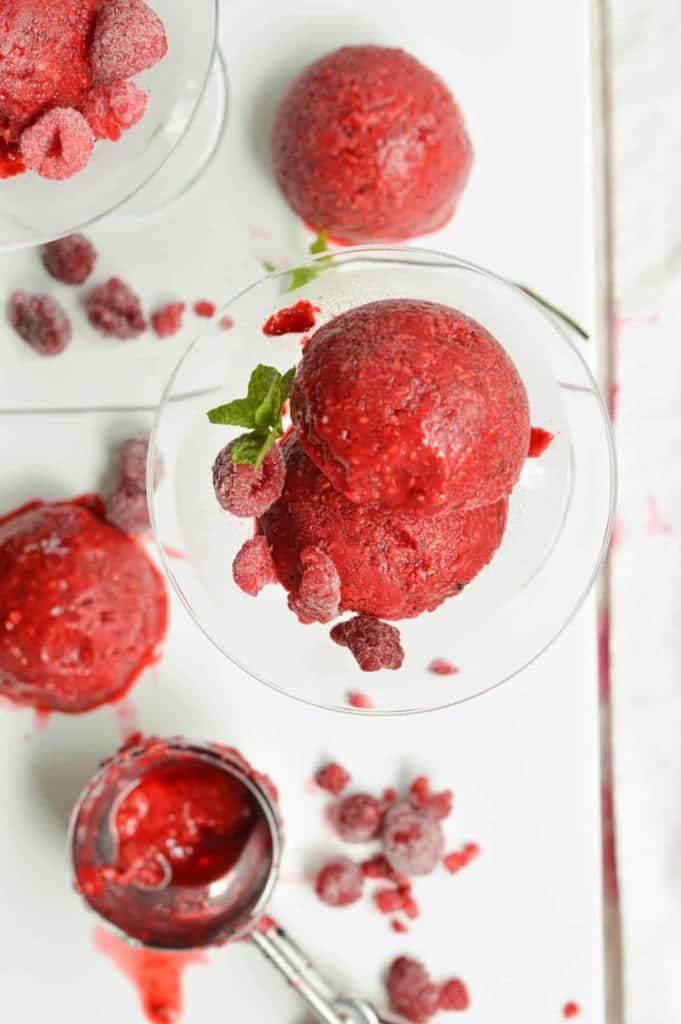
Here are some dessert recipes to try:
- Strawberry Chocolate Greek Yogurt Bark
- Greek Yogurt Brownies
- Chocolate Covered Strawberries
- 4-Ingredient Raspberry Sorbet
High Volume Low-Calorie Beverage Ideas
Healthy beverages are so important to get right. It can be incredibly easy to drink your day’s allotment of calories in drinks and not even realize it. However, drinking plain water can get boring and dull.
It’s important to find healthy high volume low-calorie beverage recipes that will allow you to enjoy flavored drinks without the added calories.
To make low-calorie beverages, mix sparkling water with cucumber and citrus slices and drink it with a couple handfuls of ice. You can also crush berries and mix it with sparkling water for a berry-flavored drink.
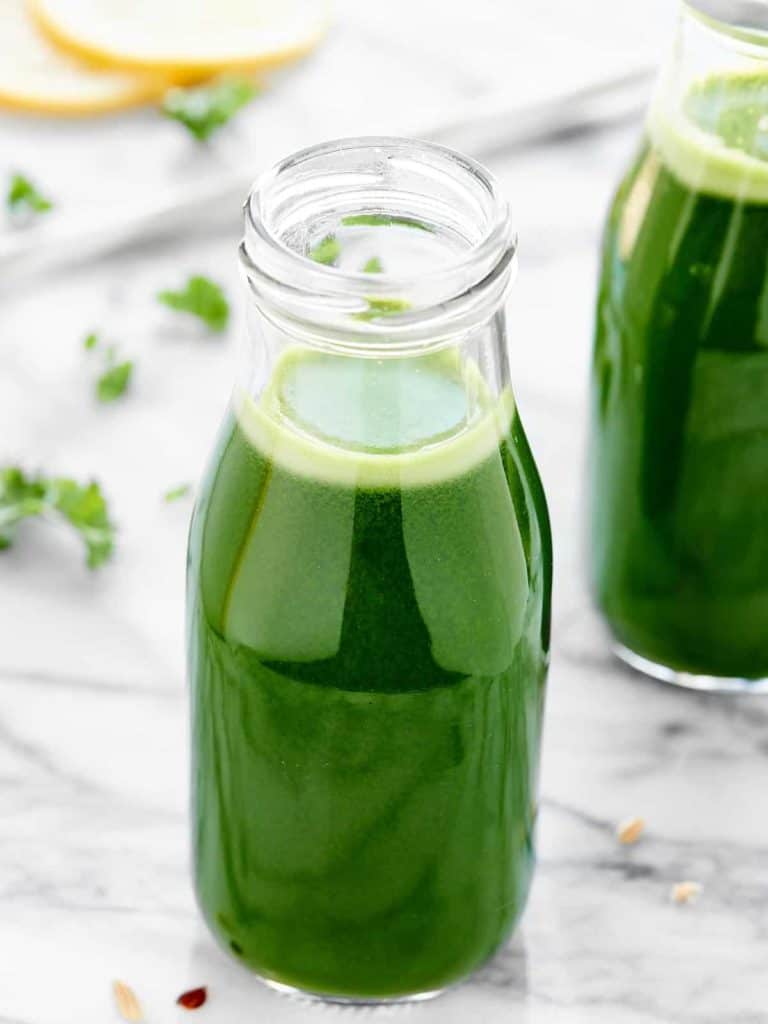
Here are some beverage recipes to try:
High Volume Low-Calorie Vegan Meals
Making your meals vegan can make it easier to consume less calories. That’s because vegan foods exclude all animal-based products. Animal-based products tend to have more fat and calorie content.
When making high volume low-calorie vegan meals, focus on what protein source you’re going to use. Will it be tofu, beans, lentils, or something else? Oftentimes, vegan meals can lack protein which leads to hunger, dissatisfaction, and nutrient deficiencies. It’s important to make your vegan meals well-balanced.
I suggest making a tofu vegetable stir fry, multibeam soup, or lentil casserole to make sure your high volume low-calorie vegan meals are healthy and balanced.
Here are some vegan recipes to try:
- Lentil Bolognese
- Butternut Squash Risotto with Leeks and Spinach
- Coconut Rice Bowls
- Vegan Shephard’s Pie
High Volume Low-Calorie Vegetarian Meals
Achieving balance in high volume low-calorie vegetarian meals will be a lot easier than vegan meals, as the dairy products you’re allowed will help add back satiating fats and protein.
When making high volume low-calorie vegetarian meals, focus on how you can use eggs, non-fat Greek yogurt, cottage cheese, and other low-fat dairy products. Tofu will also be a good protein source to lean on. Incorporate these ingredients into salad dressings, casseroles, scrambles, soups, wraps, and dips.
Here are some vegetarian recipes to try:
- Huevos Rancheros
- The Best Shakshuka Recipe
- Thai Red Curry with Tofu and Vegetables
- Savory Cottage Cheese Bowl
Incorporating High Volume Low-Calorie Foods into Meal Prep
Meal prepping is a game-changer when it comes to embracing a diet rich in high volume low-calorie foods. Not only does it save time and reduce food waste, but it also ensures that you have nutritious, low-calorie meals readily available, making it easier to stick to your health and weight management goals.
When meal prepping, stick to high volume low-calorie foods that will hold up well in the fridge for several days. Root vegetables, fruits, lean meats, tofu, grains, and beans will hold up well. Food like squash, potatoes, and soup will hold up really well, too. You can freeze individual portions of soup to make it last longer.
Be careful with foods like spring mix (or other leafy greens), seafood, and sometimes tomatoes. These gentler foods will not last as long when meal-prepped and may not hold up well either.
Dishes like casseroles, slaw salads, stir-fries, soups, and stews are great for meal prep.

Here are some recipes to can meal prep:
- Spiralized Thai Salad
- Healthy Creamy Chicken Soup
- White Bean Antipasto Salad
- Oven Roasted Vegetables
Bottomline
Eating high volume low-calorie foods can be a great strategy for weight loss and maintaining your health. It can encourage you to eat more whole foods and not overeat. It can help you stay full without feeling like you’re heavily restricting or starving yourself.
However, it’s important to note this powerful strategy for weight management should be executed carefully and with the help of your doctor or registered dietician. It’s easy to get excited by this strategy and start restricting yourself even more.
Use this strategy as part of a larger plan to live a healthier lifestyle and incorporate healthy eating habits into your daily routine.
If you found this article helpful, subscribe to my newsletter to receive more healthy living tips straight to your inbox.

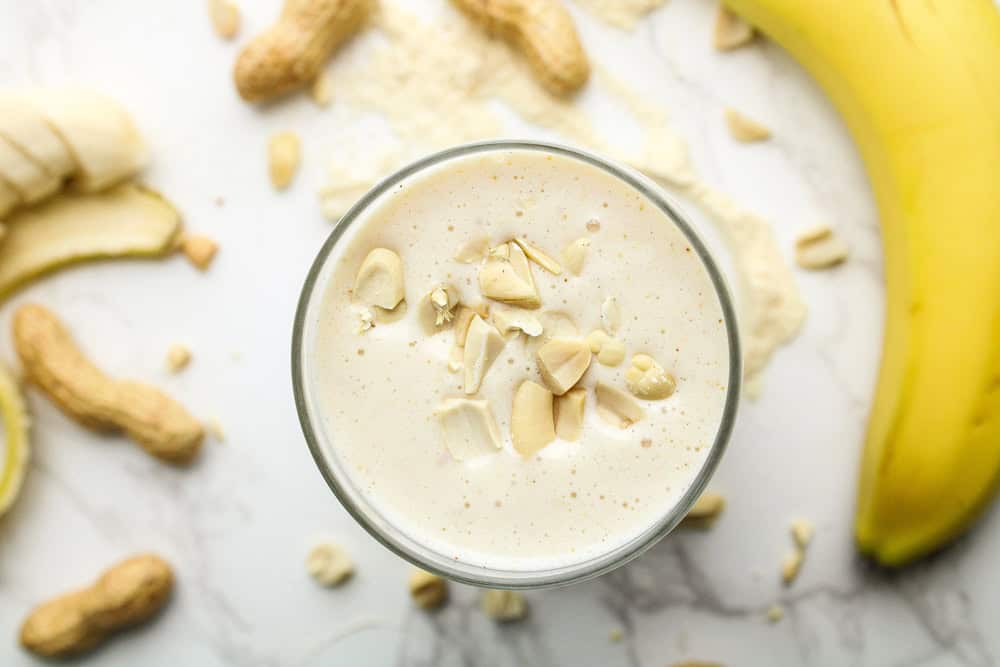
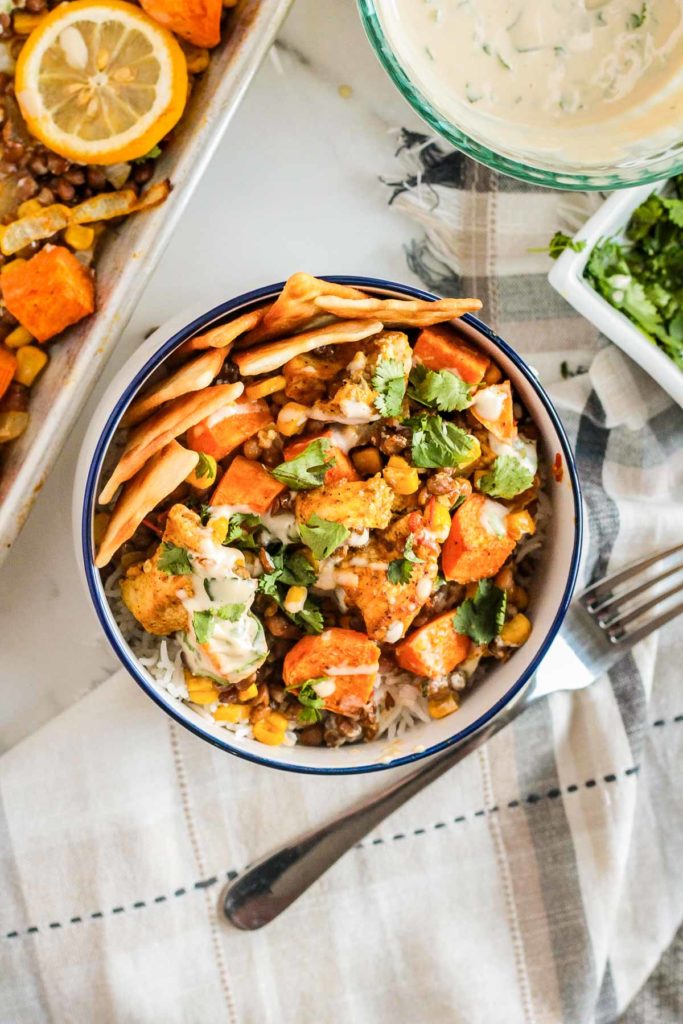
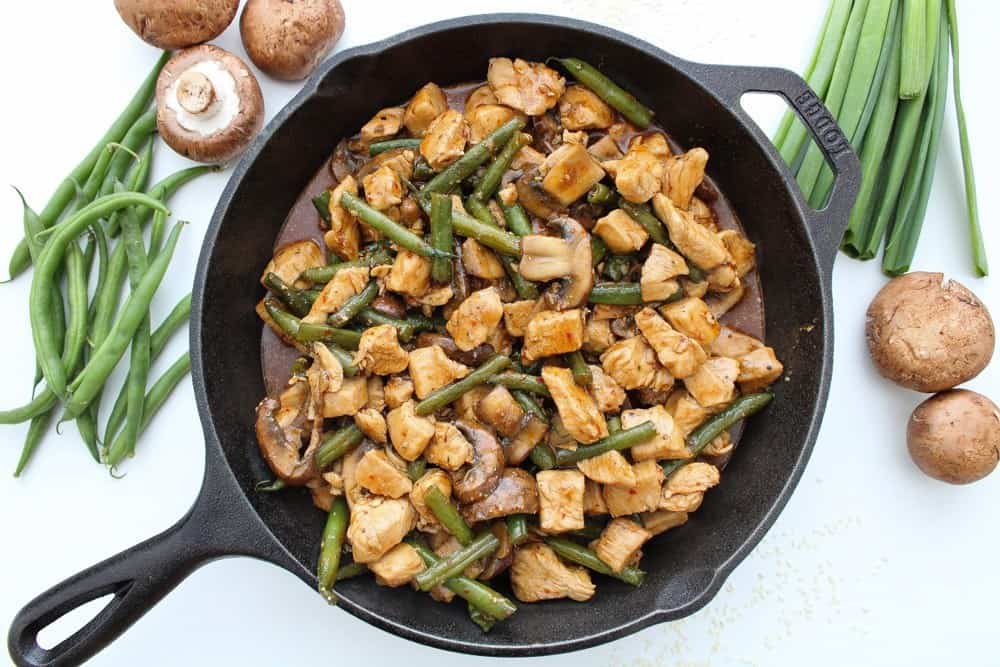
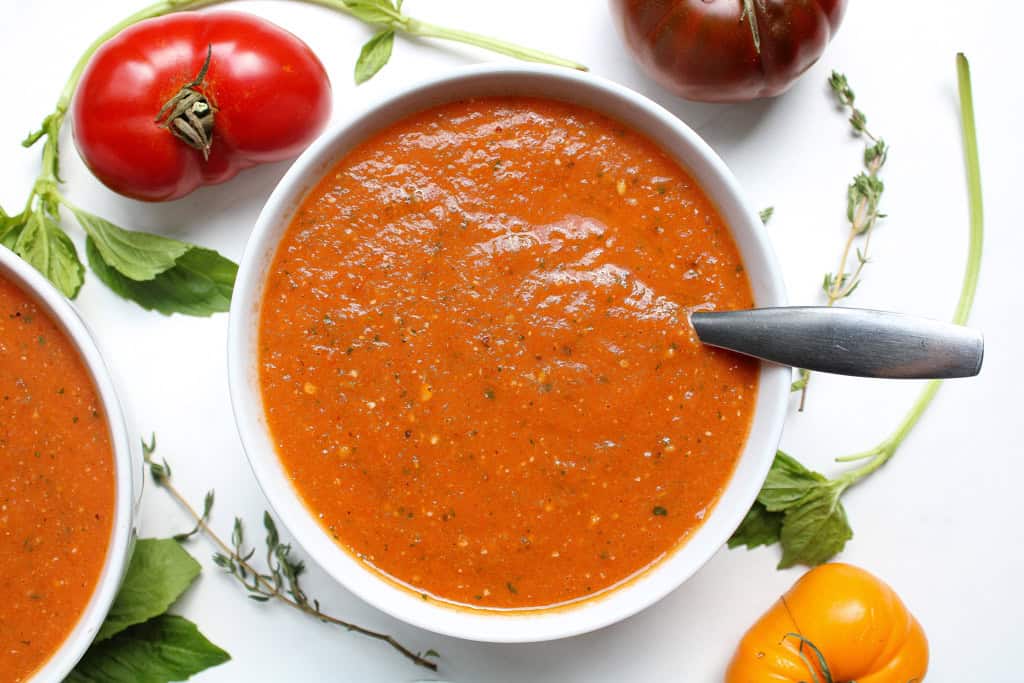

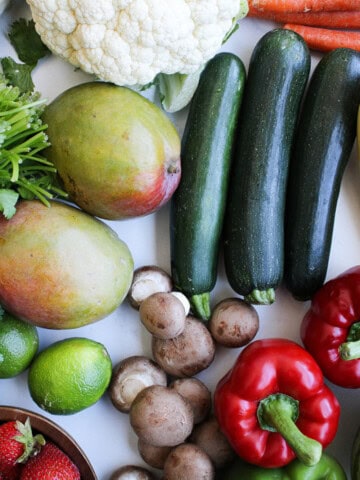
Comments
No Comments